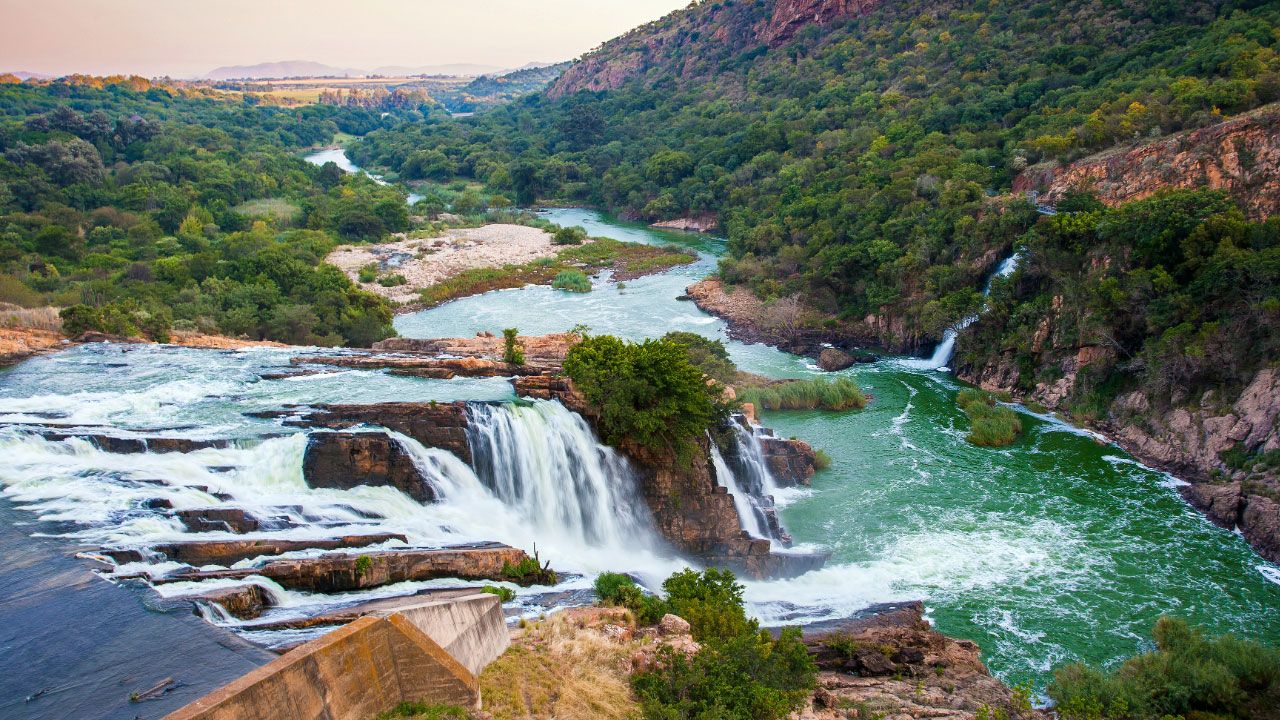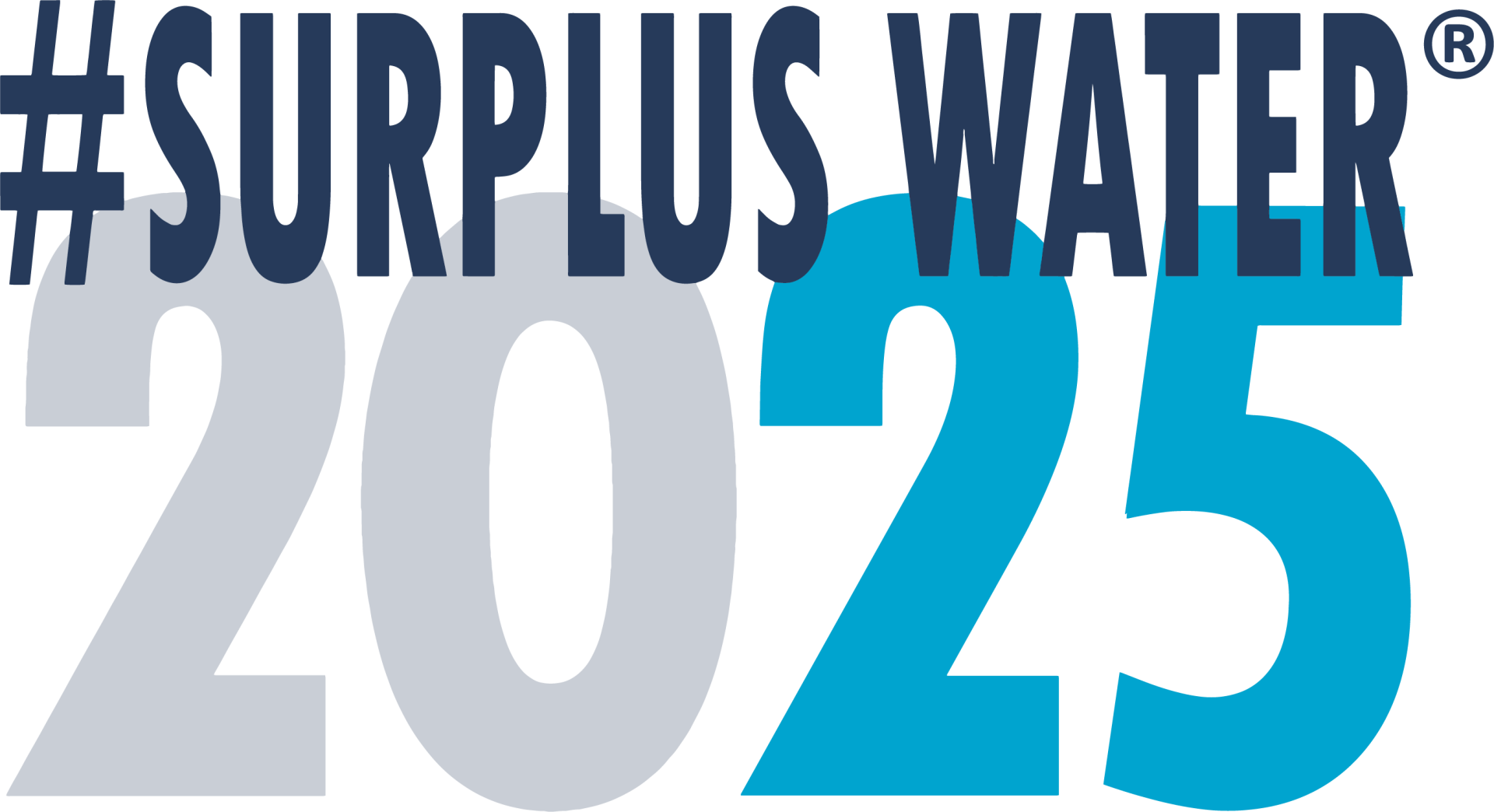The RECYCLE in Water Responsibility
Dec 20
/
Aldert Brink

Blog Series: The 5 R's of Water Responsibility
The greater good
Eat and Be Eaten
We all form part of the great circle of life. Humans tend to forget that on the most basic level, we are part of the natural cycle. We may even become aware that we are a little confused about our own place in the food chain. The circle of life is a well-balanced natural cycle of eat and be eaten. Or that is how it is intended.
In nature, there are a few natural cycles on micro and macro levels. One of the bigger cycles is the natural water cycle. In the natural water cycle surface water, mostly water in the ocean, is heated by the sun’s energy and evaporates into vapor. Vapor rises high up into the sky where, because of colder temperatures, condensation forms tiny droplets of water. These droplets form clouds which precipitate over land and ocean by way of rain, hail, or snow. Precipitation becomes runoff over land that ends up in streams, rivers, lakes, or the ocean. Some runoff recharges aquifers.
The circle of life…, and other circles
Life on land is subject to the food chain. This is also a natural cycle. The natural food cycle includes animal waste that feeds plant life and micro-organisms living in the soil and water bodies. The relationship between plants and organisms that break down waste into a food source, is yet a smaller natural cycle. Animal waste and other organic decomposing materials as well as minerals get washed to water bodies by runoff. Dissolved materials infiltrate groundwater. This supplies food to micro-organisms living in water and other aquatic life.
The natural food cycle has an influence on the natural oxygen and carbon dioxide cycles, having an influence on the natural weather cycle (i.e., the climate), which has an influence on the natural water cycle.
Natural poop scoops
Natural waste includes human waste. Human-waste refers to the waste produced by and discharged from the human body. This does not include human trash. Natural waste ending up in water goes through a process of recycling by microorganisms and plants. In this way the water is naturally 'treated' and safe to use again.
Since ancient times people settled close to water sources, putting stress on these sources in two ways. On the one hand the demand for potable water and on the other the water source coping with human-waste. Any waterbody can cope with natural waste in reasonable amounts, but when the balance of the cycle is disrupted, it causes life threatening problems.
Human-waste consists of the same useful nutrients as that of any animal-waste. In moderate amounts the natural process of recycling is sufficient and human-waste ending up in water sources are treated by the natural process. In densely populated areas the natural process becomes overburdened, and the human-waste becomes a source of pollution, rendering water harmful to humans and the environment. This is referred to as wastewater or sewage.
Bringing down the house
Another serious concern dealing with excessive human-waste ending up in the natural cycle, is human trash, causing pollution. Some of the trash we generate cannot be recycled at all. Many organisms in nature produce waste, but Humans are the only species producing waste that cannot be recycled or reused. Although many animals may inadvertently ingest or interact with human-generated waste, they do not produce the same kinds of persistent, non-biodegradable materials (trash) in huge quantities that humans do.
Water pollution is when the functioning of an ecosystem or the beneficial use of water is hampered by the release of a harmful substance into oceans, estuaries, streams, rivers, lakes, and groundwater. Pollutants include all kinds of trash, chemicals, and decaying organic materials carried by runoff to streams and rivers. Most of these pollutants are from (dirty) cities and towns with poorly maintained stormwater systems. Overfilled, poorly maintained, and outdated landfills destroy groundwater sources when pollutants seep into aquifers with precipitation.
Pollution is no joke. Humans are literally destroying their own home. The tragedy in this story lies in the collateral damage. We are also destroying the ecosystem, the home of innocent co-inhabitants of this planet.
The Case of Harties
Hartbeespoort Dam is a water reservoir in the North West Province a mere 30 km to the west of Pretoria. It is located in a picturesque setting against the Magaliesberg mountains. This dam has been burdened by an invasion of water hyacinth (Eichhornia crassipes) for at least the past 20 years. Hyacinth is a floating freshwater plant, originating in South America and an aggressive invader and will vigorously grow in water that is rich in nitrogen.
Hartbeespoort Dam lies downstream of Pretoria and Johannesburg and is mainly fed by the Crocodile river to the south of the dam and the Magalies river to the west. The Hennops river and Jukskei river are tributaries to the Crocodile river and flows through and from Pretoria as well as Johannesburg respectively.
Large quantities of effluent flows into the Jukskei river and ends up in the dam, originating from overburdened wastewater treatment plants and inadequate sanitation facilities in informal settlements. This sewage contains high levels of nitrates and phosphates. These minerals are highly favourable for plant growth. Hyacinth obviously thrives in these conditions, but Algal blooms are also a problem. Algal blooms are when there is unusual dense and rapid algae growth in a water body. As the plants die off decomposition of these organic materials is done by micro-organisms requiring oxygen for metabolism. This depletes the oxygen levels, endangering aerobic (oxygen-requiring) aquatic life. This phenomenon is called eutrophication and is not limited to hyacinth infested waters. Eutrophication can destroy any body of water subject to circumstances that benefit algal bloom.
How can we help Harties?
Over the years using chemicals and physically removing the water hyacinth plants were unsuccessful. The recent release of weevils, a beetle known for an elongated snout, reduced the plants significantly. The solution to manage the infestation in the long run will be to rectify the dam's nitrate levels. Reducing the amount of raw sewage flowing into the Crocodile river via its tributaries is critical.
The volume of effluent going to treatment facilities is simply too large to handle. Improvements, upgrades and expansion of municipal wastewater treatment plants may be ideal, but it is already too little too late. The supply of proper sanitation facilities to informal settlements, though, is not negotiable, both from a human dignity point of view as well as a pollution solution. Reducing the amount of water going into the sewer is crucial. The actual solution to the problem that the hyacinth infested Hartbeespoort dam needs, lies in the hands of the citizens of Pretoria and Johannesburg.
There are many companies, projects and communities who are doing what they can to help restore and protect our rivers, dams and natural water sources. One example is the inspiring story of how the Hennops River Revival team works in collaboration with the government, other NGO’s, NPO’s, Forums, the private and the public sector to restore the Hennops River. Collaboration is key. Let's get involved.
More on the 5 R's in our blog series The 5 R's of Water Responsibility as we dive a little deeper into each of these. Remind, Reduce, Reuse, Recycle & Recharge.
4. The RECYCLE of Water Responsibility.
Empty space, drag to resize
Join the conversation
Don't miss an R! Follow us on Facebook or Instagram for more Stories of Water.
Empty space, drag to resize
Who we are
A community of water warriors, working together to raise water awareness, saving every drop and together, aiming for surplus water in South Africa.
Get in touch
-
South Africa, Earth :)
-
droppie@surpluswater2025.com
#SurplusWater2025 Copyright © 2025
